The future of outdoor advertising?
 A series of announcements made in recent weeks by Australia’s big outdoor ad firms seem to suggest that this country is a leader in digital out-of-home technology.
A series of announcements made in recent weeks by Australia’s big outdoor ad firms seem to suggest that this country is a leader in digital out-of-home technology.
The reality? Australia is playing catch up. Think this is unfair? Then I’d suggest a trip to Seoul, which offers a glimpse at the future of outdoor.
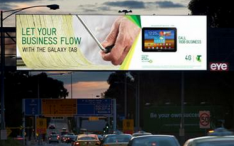 A fairly typical press release sent out by an Aussie outdoor firm recently trumpeted new technology that allows advertisers to change their messages on the gantry at Melbourne Airport three times a day. This only struck me as interesting because the first advertiser to use it is Samsung, which is spruiking its new Galaxy mobile phone.
A fairly typical press release sent out by an Aussie outdoor firm recently trumpeted new technology that allows advertisers to change their messages on the gantry at Melbourne Airport three times a day. This only struck me as interesting because the first advertiser to use it is Samsung, which is spruiking its new Galaxy mobile phone.
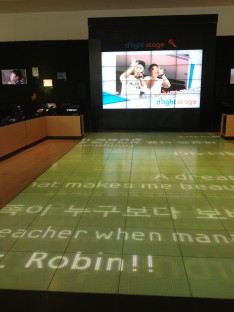 Going to Seoul from Sydney is like walking between the sets of Bladerunner and Little House on the Prairie, partly because one of Korea’s biggest outdoor
Going to Seoul from Sydney is like walking between the sets of Bladerunner and Little House on the Prairie, partly because one of Korea’s biggest outdoor
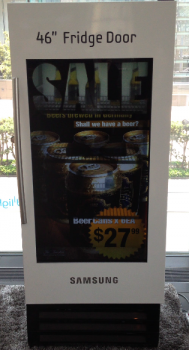 advertisers also makes the kit it and everyone else advertises on, plus a bunch of other stuff, from mobile phones, air conditioners and TVs to houses, hotels and hospitals, which the company generates a quarter of Korea’s GDP from selling.
advertisers also makes the kit it and everyone else advertises on, plus a bunch of other stuff, from mobile phones, air conditioners and TVs to houses, hotels and hospitals, which the company generates a quarter of Korea’s GDP from selling.
Soon to launch in Korea – if Samsung’s D’light product showroom is anything to go by – are such wonders as a fridge with beer ads running on it (click here to watch), a coffee table that recharges and sends messages to your phone, personisable pavement and an LED wall that reproduces your face (or an ad) on a hundred different screens.
But what is already part of the Seoul cityscape points to the future of outdoor advertising. Running through the busiest street in Gangnam, Seoul’s most affluent shopping district, is a strip of ‘media poles’ – cyclindrical advertising towers that double as street lights.
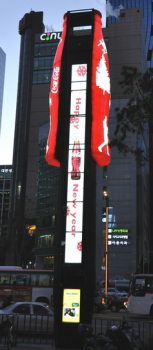 Each pole, which cost around US$100,000 to build, was funded by the government but will eventually be paid for by advertising. The poles are made of LED and LCD paneling and display a mix of media art (50%), public service messages (20%) and advertising (30%).
Each pole, which cost around US$100,000 to build, was funded by the government but will eventually be paid for by advertising. The poles are made of LED and LCD paneling and display a mix of media art (50%), public service messages (20%) and advertising (30%).
The magic happens at night and at street level, where shoppers can use a digital kiosk to interact with the ads and use features such as Google Maps to navigate around the city.
The functionality of the poles has changed as Korea’s smart phone penetration (the highest in the world) has exploded in the three years since they were built, and the next stage is to ensure the kiosks are compatible with the latest mobile applications.
Kit like this can be justified not only because it pays for itself. But because advertisers demand it (brands in Korea fret that they’ll be seen as backward if they don’t use the latest technology), and a congested city of 25m people with some of the world’s worst traffic jams means volume for advertisers and plenty of dwell time.
A new idea developed in Seoul, which is expected to arrive in Australia some time this year, is the Samsung Mobile PIN, a two-way mirrored glass showroom that the company is using to launch its new Galaxy S3 mobile phone. The showroom, a cross between an experiential marketing hub, an advertising hoarding and an art sculpture, can be dismantled and moved to other cities, hence its name.
Having a client like Samsung is of obvious benefit to the capabilities of its ad agency Cheil Worldwide, which won last year’s media grand prix Cannes for a digital outdoor idea that turned a subway station into a grocery store. Commuters stood waiting for their train were able to scan QR codes of pictures of groceries plastered on station walls by Home Plus, the local version of Tesco.
Woolworth has tried the same idea at bus stops here. The difference in Korea is that when a commuter uses the virtual grocery store, their groceries have arrived by the time they get home. But Woolies never intended bus stops to replace its stores, the retailer simply wanted more people to download its app. Tesco is a challenger brand in Korea, which is why it took a punt on digitising its stores.
As seems to be the way with Asian agencies that win anything, eyebrows were raised about Cheil’s Cannes entry last year – as it was only in test phase. But the award stood, as the virtual store was operational and generating sales. There are now 22 fully functional virtual grocery stores dotted at bus stops and a subway station (bus stops get more reach than subways…) around Seoul, the idea has also spread to Shanghai, Toronto and elsewhere.
The latest retail-meets-digital outdoor idea from Cheil uses tranparent LCD technology – another ploy to distract busy commuters. The agency has high hopes for this entry in Cannes next week.
Called Beyond the window, the technology enables messages and images to be played on a screen in front of the product itself, which is set back into the wall. Starting with Seoul’s bustling National University Station, Beyond the window is to be rolled out across 100 other subway station across the city.
So why isn’t this sort of stuff happening in Australia?
The answer is not just because Seoul has Samsung, or that brands and consumers in Korea have a greater thirst for new technology. But because of the heavy hand of government.
The sticking point is what outdoor ad firms think can make an outdoor ad a lot more effective – movement.
In pedestrianised zones in Australian cities, digital is rapidly taking over. But the spread of digital is snail-paced where outdoor is most prominent – on roadsides. This is because the government fears that digital billboards with moving content will distract drivers.
“Government is risk averse, which is holding back progress for the outdoor ad industry,” says Charmaine Moldrich, CEO of the Outdoor Media Association. “We have been arguing over whether a static roadside ad should change every 15, 30 or 45 seconds – eight seconds is the global standard – never mind have a conversation about digital ads with moving figures or animation,” she says.
But Mark Thewlis, regional president of Clear Channel, known locally as AdShel, sees regulation as an excuse. “Look at the US. It’s just as regulated if not more than Australia, but has the world’s biggest digital outdoor business. Ultimately, progress is about investing and believing in the technology.”
Digital uptake is more likely when technologies such as near field communication are standard in smart phones – and help bridge the gap between the consumer and the billboard. But what is probably more important now, is to make better use of what there is already.
The most memorable poster campaign in recent months was the work of an artist, who put one of his paintings on a billboard in Sutherland Shire in March. It wasn’t much of a surprise to see Australia do poorly in the outdoor category at Cannes last year. And with the quality of entries in the creative competitions run by the local outdoor ad firms this year, the omens don’t look good.
“Outdoor doesn’t need digital to survive,” says Thewlis. “But we’ve got an opportunity to extrend what’s possible. Yes, it’s great to have new toys. But they’re only as powerful as the creative thought behind them.”
Robin Hicks traveled to Seoul as a guest of Cheil Worldwide




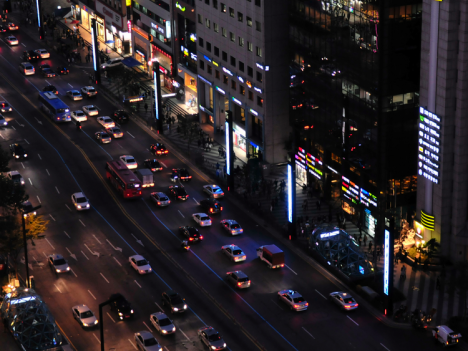

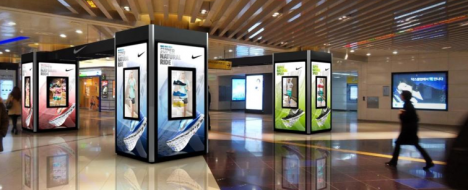

Robin,
An interesting OOH reflection of your recent visit to Seoul but maybe Australia is not quite as far behind as you might first think. The OOH activity in Korea generally and especially in Seoul has always been way ahead of almost every other international city I know. Their adoption of digital sky signs over the years and more recently digital street based formats is legendary and as you say not surprising being the home of some of the world’s largest display manufacturers.
The comments from Charmaine regarding the current absence of roadside digital displays in Australia, and in particular NSW is accurate. Poorly directed red tape is holding the sector here back but that will change over time as misguided myths are busted and change comes about.
In the mean time Australia is quite well served considering our population size, geographic challenges and the current commitment by Australian media buyers to OOH spend (I think in Korea OOH has traditionally attracted almost 20% of all media spend!).
Move past the roadside issue and there is actually quite a level of digital OOH available and more coming in development pipelines, certainly here at EYE. Interior precincts such as Malls, Airports and Uni common areas have provided us valuable audiences in extremely large numbers, terrific national scale and high value lifestyle segments. The digital networks are in place and the technology constantly being refreshed. These networks have been used widely but still primarily as electronic OOH. The big opportunity that is still to be actualised is the flexibility that digital offers – day parts, week parts, multiple creative execution flexibility for the same campaign etc – you name it but we don’t see adoption of this in campaigns. Maybe occasionally but it should be all the time. It’s not for the sake of making the case but for some reason the opportunity is not resonating in Australia. All thoughts, feedback and input welcome. Why is it so!
Cheers
Gerry
User ID not verified.